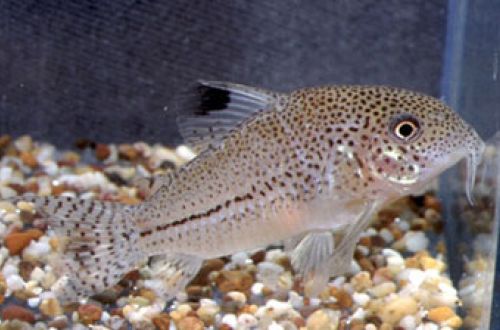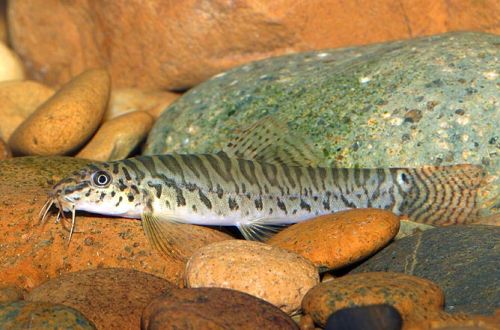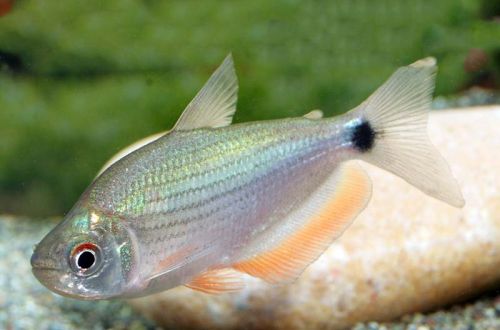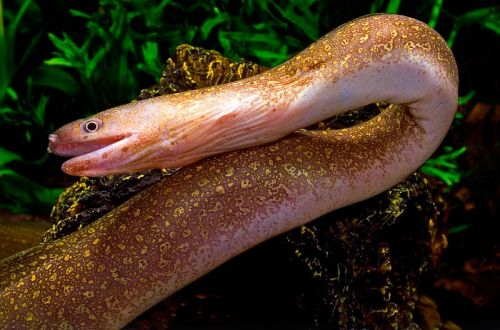
Julie’s corridor
Corydoras Julie (Corydoras julii – scientific name) is a representative of the family Callichthyidae – callichthy catfish. This catfish is probably the most popular among aquarists among its relatives. Peacefulness, activity, expressive coloring, unpretentiousness in content – this is a small list of the advantages of Corydoras Julie.

Contents
Habitat
The Julie corridor was first described by the explorer Franz Steindachner in 1906. The first individuals were found in South America in the lower reaches of the Amazon River and coastal rivers in northeastern Brazil. Fish prefer bottom layers of water, the diet includes worms, crustaceans, insects and vegetation.
Description
Catfish has an original body coloring that distinguishes it from other catfish. The coloration is cream or grayish with small, black spots all over the body, a dark stripe stretches from the gills to the end of the caudal fin. This horizontal stripe, along with a black spot on the upper fin, makes it easy to identify among other members of the Corydoras genus. Catfish has a modest size (no more than 5 cm) and a fairly large head for its proportions. The mouth has small antennae, with which the catfish feels the ground.
Food
With pleasure absorbs almost any food. Accepts all types of live food, suitable for its size, vegetation, such as lettuce, as well as dry industrial food (granules, flakes, etc.). An important condition is that the food must be sinking, since the fish only in extreme cases rise to the surface.
Maintenance and care
It spends most of its life at the bottom, so the condition of the soil is crucial. It is recommended to change the water by 10% to 20% weekly or every two weeks, as well as clean the substrate, remove the remnants of eaten food and plants.
Catfish successfully adapts even in small aquariums from 40 liters. In the design elements, preference should be given to wood – snags or twisted roots will serve as a refuge for such a small fish, grottoes or caves can be built from stones. Shelter is important, Corydoras Julie, like any other catfish, leads an active lifestyle in the dark or twilight, so be sure to give him the opportunity to hide during daylight hours. The substrate should consist of coarse sand or fine smooth gravel, which will avoid injury to sensitive antennae.
When selecting equipment, attention should be paid to the filtration and aeration system in order to avoid oxygen starvation.
Social behavior
Julie’s corridor is a peaceful, calm fish, because of its nocturnal lifestyle and love for shelters, it practically does not come into contact with other inhabitants of the aquarium. Perfectly complement almost any community of other peaceful fish.
Sexual differences
Males are usually smaller and slimmer, females have a more rounded abdomen, however, it can be difficult to reliably determine the sex of fish at home, so keeping more than 3 individuals is the best way to breed.
Breeding / breeding
Catfish is successfully bred, the spawning period does not last long, but it has its own characteristics. After completing the courtship procedure, the female collects some of the male’s semen in her mouth, then she attaches several eggs to a hard surface (strong plants, pipes, glass, etc.) and fertilizes each egg. When the seed runs out, she again returns to the male and repeats the procedure.
Diseases
Extremely hardy and disease is not usually a problem if the fish are kept in optimal conditions. The only vulnerable spot is sensitive antennae, which are easily injured by unsuitable soil, or in conditions of high ammonia concentration, they become infected. More information about diseases can be found in the section “Diseases of aquarium fish”.





